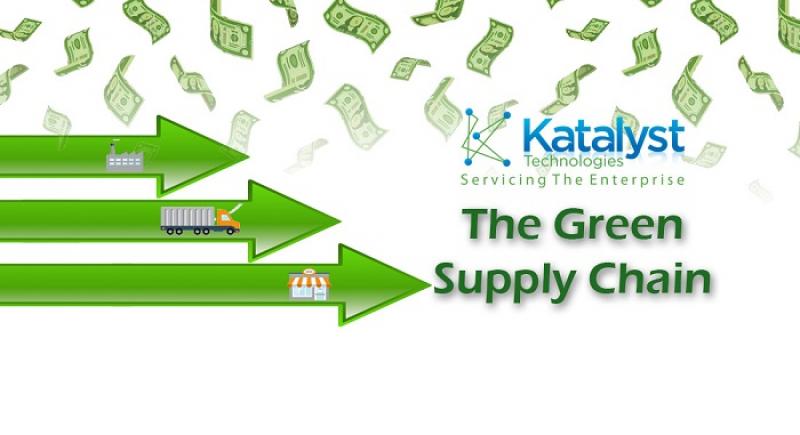With consumers more attuned to the social and global impact of the brands they choose to support, it has become imperative for companies to actively promote endeavors that showcase a commitment to sustainability and improving the state of the planet. Initial challenges in implementing these strategies will likely reap the rewards of increased customer satisfaction, economic growth, and minimized environmental impact.
An enterprise’s supply chain management system is perhaps the area that allows for the greatest green growth. Small adjustments in manufacturing, packaging, and distribution can add up to a significant impact. The good news? There’s always more that companies can do. The bad news? There’s always more that companies can do.
“I don’t know any company that wouldn’t want to reduce waste and continue to enhance their process,” says Charlie Wilgus, general manager of the supply chain and operations division at executive search firm Lucas Group. “Who doesn’t want to help the environment?” he says with a laugh. “You would never want to be anti-environment.”
The Benefits
Even if environmental improvement is not a priority for your organization, there are plenty of reasons to encourage sustainability within the supply chain.
Eliminating waste and costs
It’s an experience many online shoppers have shared: a giant box arrives at your door. Inside, a single small book or ink cartridge, along with a whole lot of bubble wrap and/or air. It’s hard to imagine that this benefits anyone other than cardboard manufacturers. Amazon has made strides to eliminate inefficient packaging and has also reconsidered shipping strategies, including implementing electric trucks and promoting Amazon Locker delivery options at various retail outlets.
Amazon is, of course, an outlier in the industry, but this is one area where size matters not. “It doesn’t have to be that big of a company; you can do that even if you’re working out of your parents’ basement,” says Wilgus. “Just think of what that means to a company’s costs… you’re optimizing the supply chain management (SCM). It creates an entire better, cheaper, faster process.” That leads to “a better product [and] a better customer experience. And ultimately, that leads to increased revenues and hopefully increased profits.”
Better publicity
Sustainability is no longer seen by consumers as a perk; it’s an absolute necessity. Nielsen research suggests that consumers are willing to not only change their habits but to pay a premium for environmentally friendly options. With that, though, comes an expectation that companies are making concerted efforts to improve their green efforts—another study shows that 81% of global respondents “feel strongly” that companies should do their part in improving the environment. Companies that make those efforts should also prioritize emphasizing them and reap the PR benefits.
Increased collaboration with other companies
Along with improved brand satisfaction, some manufacturers and companies that accentuate sustainability will exclusively do business with similarly minded organizations. “If you want to work with some of the big companies as a vendor or supplier, you have to get your stuff together and be green,” says Wilgus. “Because they’re going to look for companies that are, and the ones that are not are going to get overlooked.”
Organizations should also apply for third-party certifications that can provide sustainability credibility. Not only is this great for branding purposes, but some experts predict that in the future, companies may face financial penalties if their carbon footprint is too large.
Making the Pledge
Companies across various industries—including Katalyst!—have pledged their commitment to reduce their environmental impact. Some people use the terms “carbon neutral” and “zero emissions” interchangeably, but there is a difference. Carbon neutral means that companies either proportionately offset their carbon emissions or purchase an equivalent amount of carbon credits. Zero emissions means that no carbon is released in the first place.
“For some of the larger companies that maybe have more of a carbon footprint, it’s easier for them to see how they could actually reduce it,” says Wilgus. “It’s interesting because they’re actually contributing the most, but they have the most to make up and the most resources and money to do that.”
Not to be outdone, Microsoft recently announced an initiative to become carbon negative by 2030, promising to remove more carbon from the environment than it releases. By 2050, the company hopes to remove its entire carbon footprint since its 1975 inception. It’s hard to expect other organizations to match such a bold goal, but sustainability is clearly the way of the future.
“If they set a goal like that, ten years is plenty of time for them to make some major changes,” says Wilgus. “But they’ve got to be committed to it, and it can’t just be a marketing ploy. It has to be part of the fiber of their culture.”
Katalyst Can Help
Is your supply chain ready to go green? Take small steps to make a big impact. Schedule a consultation with our experts to determine ways your organization can reduce its carbon footprint and increase revenue.
Source Link - https://katalysttech.com/blog/the-green-supply-chain/
